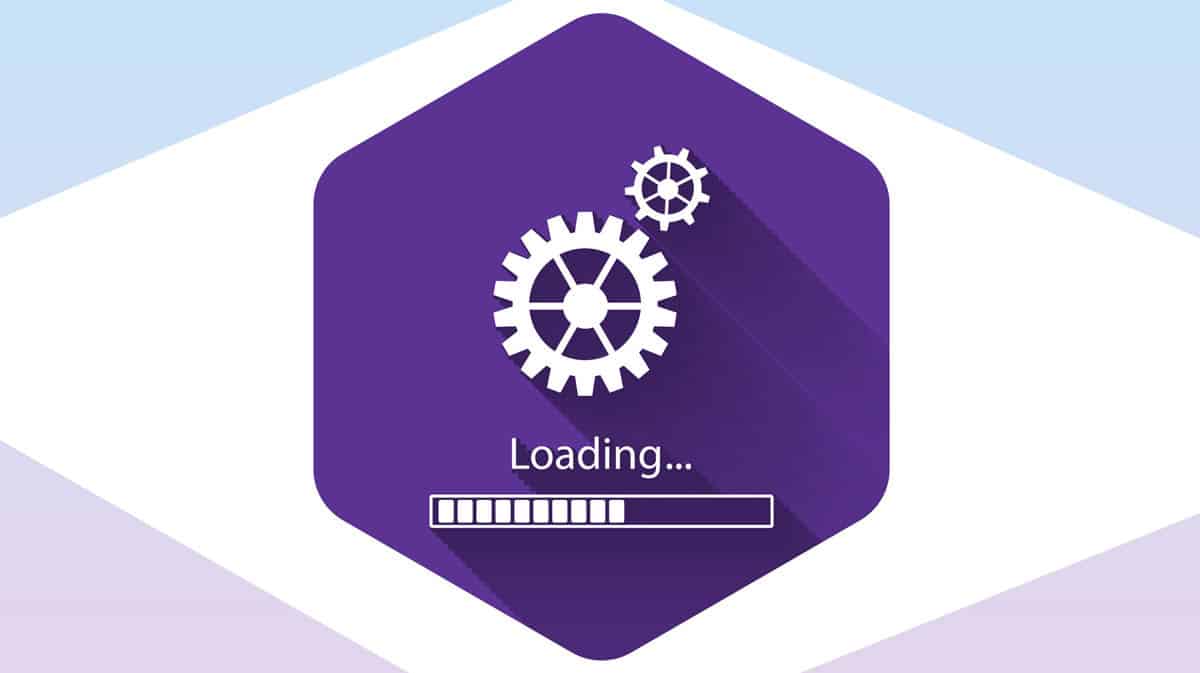What’s holding you back from having a work-from-home experience that is just as effective as working from the office? Maybe you’ve got a rambunctious puppy or children adapting to remote learning. IT experts can’t do much about those, but in onboarding new clients and supporting existing ones during this strange time, Anderson Technologies has discovered two common barriers keeping employees from making the most of remote work.
Speed That Just Won’t Cut It
First, let’s take a moment and define our terms.
Internet bandwidth is measured in Megabits per second (Mbps, meaning “the rate of transfer of one million bits per second”) but this doesn’t mean speed, though it is often referred to as such.
Bandwidth refers to the amount of data that can be sent per second. According to the FCC, broadband, also known as “fast internet,” is defined by download/upload speeds of at least 25/3 Mbps, but this isn’t sufficient for a multi-device home. A household with more than one connected device streaming, video chatting, and working or learning from home, will find that those numbers struggle to keep up.
Sometimes though, increasing your bandwidth doesn’t improve your data capacity the way you expect, resulting in what people call “slow internet.” This could be an issue that must be resolved by the Internet Service Provider (ISP), but sometimes the problem is your own hardware. Unsuitable or improperly configured firewalls, modems, and the like can create a bottleneck in the connection. You may be paying for 200 Mbps, but if only 100 Mbps can get through your firewall at a time, that’s all you’ll get.
Download bandwidth indicates the top amount of data that can be sent to your device per second. This covers literal downloads of files or applications, accessing data over social media or web sites, receiving video or audio calls, or viewing video content on YouTube or Netflix. Upload bandwidth, on the other hand, controls the amount of data your device can send to other devices. Ever have a video upload in two minutes on one internet connection and in ten minutes on another? That is upload speed. This includes literal uploads (sending a video or uploading a picture to your social media account), outgoing data from video or audio calls, and—this is the kicker for employees who work at home—connecting to VPNs or remote desktops.
Now, consider that working remotely relies on two separate internet connections (the office and the home), each with their own download and upload speeds. Smooth flow of data requires that both connections have enough bandwidth to handle the constant passing of data back and forth. Office bandwidth needs will fluctuate with the number of employees, the work being done, and the number of employees remoting in from home.
Home bandwidth, despite that 25/3 FCC number, should be closer to 40/20 Mbps in order to run access software like Teamviewer or Splashtop, or for a traditional VPN, according to Anderson Technologies’ System Administrator Joe Baker.
Consulting with your IT staff or managed services provider should give a clearer range of bandwidth goals specific to the needs of your company, and your employees. Also worth considering is that in many cases, when employees are working from home they’re not the only ones using the connection. Spouses and children share the same internet and this can push the internet bandwidth to its limit.
What does it look like when bandwidth at home or in the office just doesn’t cut it? Consider this real example.
In the process of onboarding a new managed IT services client, Anderson Technologies performed a technology audit. The client was paying for 200/7 Mbps but wasn’t sure they were reaching the full potential for internet speed. In our audit, our technology experts discovered that a previous vendor working with the client had installed a powerful firewall, but because 7 Mbps was not enough upload bandwidth for effective work, had turned off important security features, leaving their network not only vulnerable, but leaching money for nothing. The vendor had also presented the 200/7 Mbps bandwidth package as sufficient. Without education on the importance of upload bandwidth, that 200 download number looked like more than enough.
When employees began working remotely at the onset of COVID-19, the insufficient bandwidth was exposed.
In partnering with Anderson Technologies, the client is now up and running in the office and at home with higher upload bandwidth as well as a new and fully functioning firewall.
But sometimes addressing internet bandwidth on its own isn’t enough to solve slow work speeds.
Overloaded and Ineffective Hardware
Let’s take another moment to define some additional concepts.
Whether operating on a laptop or desktop computer, every employee’s workstation comes with a hard drive. Whether that hard drive is optical or solid-state can have a major impact on performance.
An optical hard drive (HDD), or spinning disk, has moving parts, physically etching and retrieving data from its components. Until recently, this type of drive was standard, and it can still be found on most budget machines. A solid-state drive (SSD), on the other hand, doesn’t have any moving parts. This dramatically affects boot speed, data retrieval, and performance, but adds to the total cost of a workstation.
For computers needing enterprise-level protection like advanced anti-virus products, an HDD can’t compare to the processing speed of an SSD. These next generation security services are the best protection from a constantly shifting digital threat landscape, but they require lots of RAM, fast internet, and the efficiency of SSDs. Knowing the increased vulnerability of remote workers, compounded with companies scrambling to meet demand for new workstations, this is especially relevant.
And these concerns aren’t going to go away any time soon. Next Gen products will continue to include aggressive and powerful programming. Limited hardware will go from slow and frustrating to completely obsolete. An effort to save money now could lead to larger purchases in a few years.
What about RAM?
RAM, or Random Access Memory, is the amount of memory space a workstation can access for immediate data retrieval and processing. Think of the hard drive as the offsite storage of your information, and RAM as the desk drawer right next to you. You’ll get to the information in the drawer much faster than the information held offsite. The operating system, security services like anti-virus, and programs like email, internet browser, plus any additional job-specific programs, also rely on having enough RAM to run.
For most remote workers, 8GB of RAM should be sufficient, says Anderson Technologies’ Joe Baker. You’ll also need at least 8GB running on any onsite computers being accessed remotely. If running more than one program at once causes serious lag, limited RAM could be to blame, and it is time to re-evaluate the hardware with IT staff or your MSP. One of the good things about RAM is that more can be added to an existing workstation without too much hassle.
Budget is often the common factor in office and remote work set-ups that are marked by slow internet and slow computer processing. In an effort to save money, companies often opt for the most bang for their buck without realizing the equipment is not only insufficient for the task, but that it will quickly become obsolete. This ends up costing the company in downtime, employment of tech services, and pricy replacements.
Partner with a managed services provider or your IT staff when examining the true causes of ineffective work from home. The solutions are in reach! Call us at 314.394.3001 or email us at info@andersontech.com.




